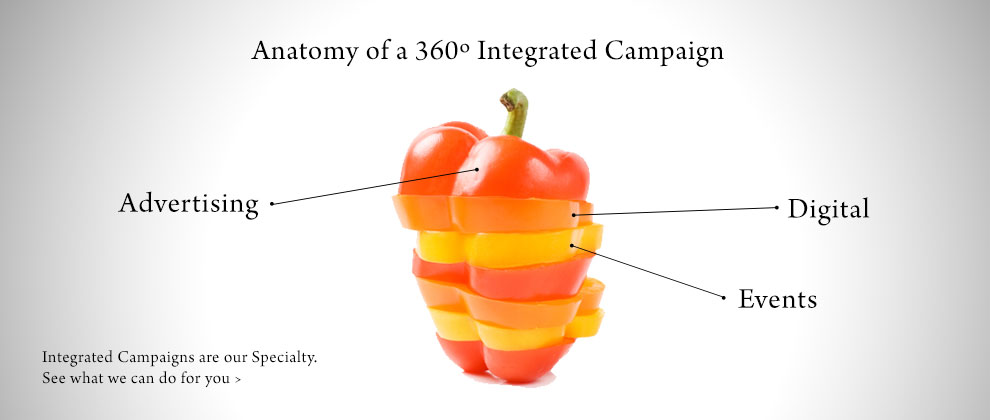In today’s blog post, our partner Conner from Junction, Vancouver examines aspects of organisations that can determine their success when it comes to digital marketing.
We work in a crazy industry — there is no formal education, no certificate of authenticity, and the skills change so quickly that most of my work to write this email is not finding new things, but filtering to find the most impactful. With so much uncertainty, a lot of the work in our space can feel like treading water to keep breathing. What’s the competition doing? Do we have enough followers? Do we need to be on Twitter?
When every day is a struggle to keep up, where’s the space for creativity, or more importantly, the space to have a meaningful impact?
These are the questions that were going through my head as I prepared for this week’s Social Brief.
So, I thought about all of the best digital businesses that I’ve gotten to know from the inside out, and compared them with the ones that were less successful. The differences became obvious, and fit conveniently into 5 bullet-points:
1. Leadership Commitment
Where the leaders’ attention is, the whole organization’s attention goes. Commitment doesn’t mean resources — I’ve seen plenty of well-meaning executives cut a big cheque to “empower” their digital teams and then return their attention back to the parts of the business that they saw as more crucial. That affects the way that people think and talk about what they’re up to. It affects the way that they talk about it inside the organization, and ultimately the audience can feel that lack of focus. In the worst cases, the audience ends up confused because the digital channels are saying one thing while the executive team or the traditional media are saying another.
2. One Customer
These digital things are just tools to communicate with our customers, so why the game of broken telephone? One major difference that I’ve noticed is just a simple understanding that the website, checkout experience, email campaigns, social channels, ads, etc. are all just different sides of one coin. The same person who reads our email probably did so because she visited our retail location last week and, because she loves us, she’ll notice our transit ads next.
Approaching our digital though the lens of One Customer looks like the same creative teams being involved with all work, or at least having a seamless way to share assets, briefs, and ideas, so that our different touch points each tell a part of the same story. When the opposite happens, customers see a Facebook ad that drives to a website that has conflicting message, and a phone number that calls a person who wasn’t aware that a promotion existed in the first place. It sounds simple, but running the business to serve one customer is a fundamental shift in the way that most of us operate – once the shift happens we’ll wonder how we ever operated another way.
3. Skepticism
Remember Vero? I feel like that lasted even less time than Ello did. Smart digital organizations rushed to the new platform to claim their space, and even smarter ones immediately took a look around with a healthy dose of skepticism to evaluate whether it was a good use of their limited time and resources. There are so many opportunities out there, and those salespeople who keep calling aren’t wrong: That new app/SAAS tool/ad platform does deliver some impressive numbers, but are they the right numbers for this organization? Only the people inside can know that. The best digital organizations have leaders who are fiercely protective of their time & resources, focusing it on the areas that are the best fit for the organizations’ objective vs. the shiny new thing.
4. Test, Then Hell Yes or No
In my coaching sessions I constantly get asked questions about ad network opportunities, content collaborations and/or influencers. The truth is that any one of them could be a massive hit, or a waste of time. The best digital businesses that I’ve worked with all look at opportunities, test them out and then, if the opportunity is there, push all in. I’ll give an example: Travel & tourism brands buy a lot of little ads with Facebook, Yelp, Trip Advisor, and a few influencers. The ones who get the maximum results aren’t the ones who do a bit of everything, they’re the ones that identify the most valuable placement and dominate. They buy ads on Trip Advisor that are supported by a dedicated landing page, a retargeting campaign and a coordinated effort to increase their rating. In a marketplace where people have so many messages available to them at all times, the only ones that break through are the ones that go deep.
5. Different Channels = Different Goals
Goals and KPIs are essential, right? We all know that, but the best go a step further: They recognize that there are many different objectives that their channels can achieve. Sometimes the best thing that a social ads campaign can do is make a large number of people aware of a message. In that case, the brands may run a video ad and measure the number of people who watched past 75% of the video. When the campaign is able to reach, or exceed, their target volume of people who watch 75% (or more), it’s a success. Those teams celebrate that success and have a plan for what they can do to covert on their newfound awareness.
What they don’t do is call a meeting in the middle of the campaign to question whether it’s driving sales. That’s not to say that they ignore traffic & revenue, in fact they are some of the most laser-focused on sales data when that’s the objective. For work like email marketing and retargeting ads, effective digital businesses know their numbers like gospel. What’s critical is knowing what each campaign’s intended outcome is, and measuring its success based on those targets. The best digital teams recognize the relative roles that their tactics play, and use them like a conductor in an orchestra.
Yes, every organization is different, and yours surely comes with its own nuances, so here’s a thought that I’d like to leave you with: Is your digital strategy fundamentally driving the business forward, or is it fighting to stay afloat
Want to hear more from Conner? Follow @Conner_G on Twitter and sign up here to receive his weekly emails.













